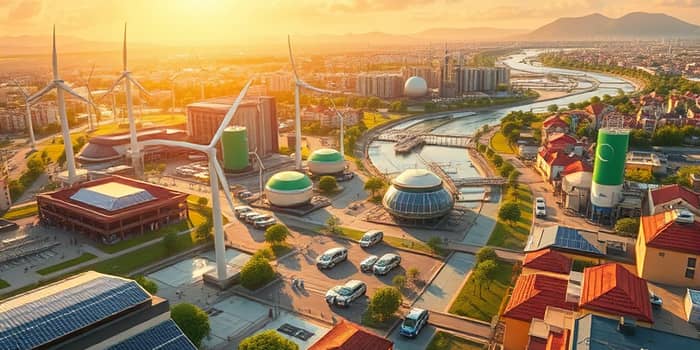
Across the globe, an unprecedented shift is under way as governments and investors respond to the urgent call of the Paris Agreement. With climate policy driving new streams of capital, green infrastructure funding is scaling up rapidly. Yet, the gap between current flows and the trillions needed remains vast, demanding unwavering commitment and innovation.
Annual clean energy investments have surged from $1.3 trillion in 2020 to nearly $2 trillion by 2024. Despite this growth, projections by the International Energy Agency indicate that $5.6 trillion per year is required between 2025 and 2030 to stay on track for net-zero emissions by 2050. The disparity highlights an urgent, multi-trillion-dollar shortfall.
Developing countries face the steepest challenge, with a financing gap of $4 trillion annually, including $1.8 trillion needed specifically for climate resilience projects. To alleviate this imbalance, wealthy nations have upgraded their commitments: from $100 billion per year to a new target of $300 billion annually by 2035.
Landmark laws, such as the U.S. Inflation Reduction Act and the European Green Deal, have become catalysts for green investments. By offering subsidies, tax credits, and direct grants, these frameworks are reshaping risk profiles and crowding in private capital.
At COP29, nations pledged higher targets for mitigation and adaptation financing, underscoring that ambition and funding are inseparable. Sovereign green bond issuances are scaling up, enabling governments to lock in low borrowing costs to fund national climate action plans.
Innovative instruments are transforming how projects secure capital. Blockchain-enabled tracking ensures transparency in fund allocation, while AI-driven risk assessment streamlines due diligence. These technological advances increase investor confidence in green ventures, particularly in emerging markets.
New structures—carbon trading platforms, sustainability-linked debt, and blended finance models—are unlocking capital at unprecedented rates. By aligning repayment terms with environmental performance, stakeholders share both upside and accountability.
Major growth areas include solar, wind, hydro, and emerging green hydrogen plants—Europe’s first industrial–scale facilities will come online in 2025. Electric vehicle charging infrastructure investment skyrocketed by 40% from 2022 to 2023, led by advanced economies and China.
While advanced economies and China finance 96% of worldwide EV charging networks, developing regions struggle with fragmented standards and limited access to affordable capital. The result is stark inequality: those most vulnerable to climate impacts often lack the resources to adapt and build resilience.
Bridging this divide demands tailored de-risking mechanisms, capacity building, and alignment of multilateral development banks. Without equitable financing, global targets remain out of reach.
The Climate Bonds Initiative’s "Green Infrastructure Investment Opportunities" report showcases bankable projects—from a 500 MW solar farm in Vietnam to carbon-capture hubs in Northern Europe. These examples illustrate how robust project pipelines can attract institutional investors when backed by strong policy frameworks.
In Southeast Asia, GIIO identified 16 projects poised to mobilize billions in private capital, demonstrating the power of data-driven project preparation.
Despite progress, significant barriers persist. Regulatory uncertainty, shifting political landscapes, and corporate rollbacks can stall funding flows. In many regions, pipeline development is hampered by a shortage of investment-ready projects and local technical expertise.
Moreover, the current pace implies a funding gap of trillions annually through 2030. Meeting Paris goals requires not only ramped-up investments but sustained policy consistency and public-private collaboration.
Investing in green infrastructure is more than an economic opportunity—it is a moral necessity. Those least responsible for emissions are often most exposed to extreme weather, sea-level rise, and resource scarcity.
Redirecting capital toward resilience and decarbonization is a matter of global justice. Every dollar invested today returns manifold benefits: cleaner air, stable climates, and jobs in emerging industries.
To close the gap, stakeholders must:
Only through bold policy alignment and financial innovation can the world marshal the trillions needed for climate-compatible infrastructure. The time to act is now—by mobilizing public and private capital in concert, we can forge a resilient, net-zero future for all.
References













